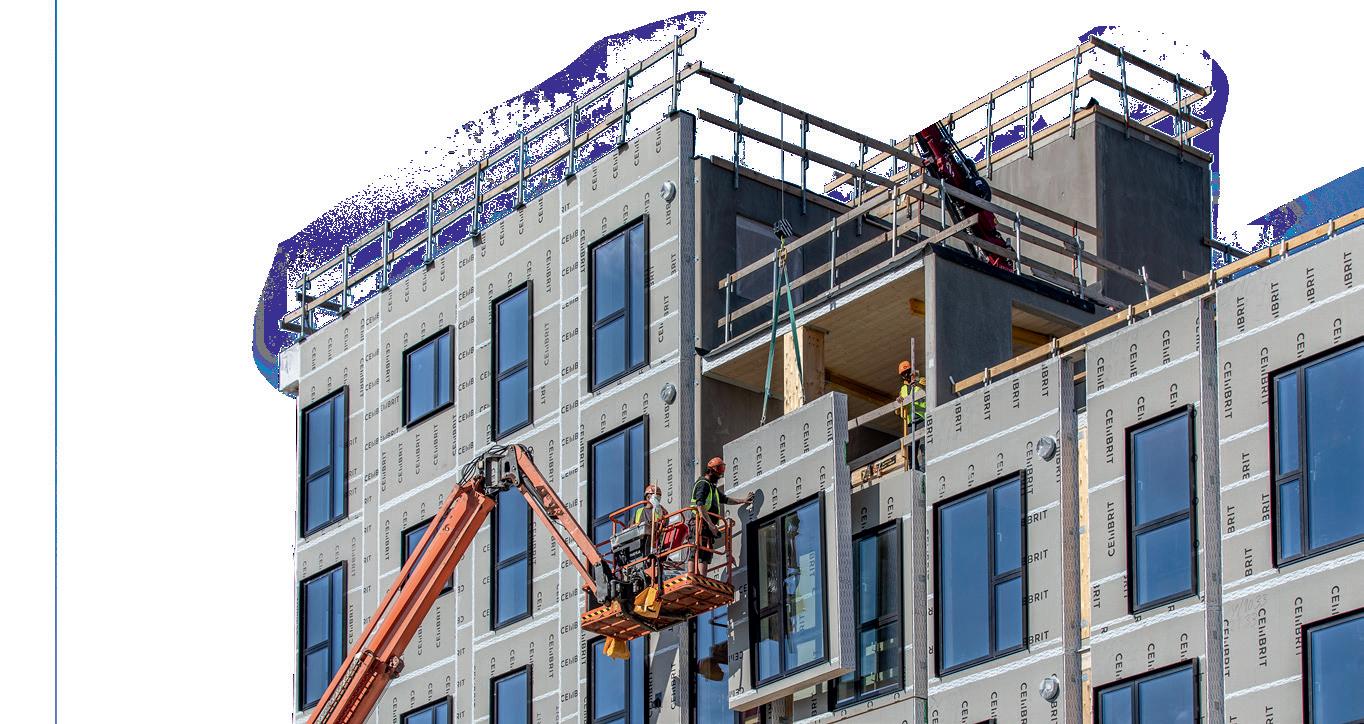
3 minute read
Bicycles take Le Mans


Advertisement
Le Mans is world-famous for its annual 24-hours motor race where former Danish racing driver Tom Kristensen has won no less than nine times. In Artelia, we are taking part in making yet another Danish mark in Le Mans – this time with our bicycle traffic expertise.

As part of the green transition, many large French cities have started focusing on moving people from cars to greener and more sustainable transport modes. In that connection, the bicycle has rolled into the spotlight. This has been noticed in Denmark where our experience with planning safe and efficient bicycle routes is a requested qualification. It is therefore one of the areas in which we have established a close cooperation with our French colleagues which has led to several interesting projects.
One of them is Chronovélo – an extensive project with a development pool of EUR 74 million with the purpose of establishing a 315 km network of bicycle routes that connect the entire Le Mans Métropole area which covers the city Le Mans and its surroundings.
Connection is essential
From Artelia in Denmark, we have helped our French colleagues make an infrastructure plan that defines and prioritises the bicycle routes that together will form a network. Project Manager Elena PerezRebollo explains about the cooperation :
The process and cooperation with the client were primarily managed by Artelia in France while we have contributed with our expertise in bicycle planning in design meetings and workshops. It was important for the client that we, as part of the team, were present physically and participated actively during the process.
Elena Pérez-Rebollo Head of Department Client Consultancy –Infrastructure Copenhagen
During the project, the FrenchDanish team also spent a day in the saddle with the client to register and analyse the current conditions in Le Mans and its surroundings.
The city had clearly made an effort to introduce bicycles and create attractive, green solutions, but there was a need for creating an interconnected network where bike riders can move around in a safe and secure manner, Elena explains.
It therefore became the focal point in the preparation of the plan that was founded on four primary routes : three transverse routes that connect the city's surroundings and cross each other in the centre of Le Mans as well as a circular route around the city. A number of secondary routes connect and support the primary routes. During the process of prioritising primary and secondary routes, it is important to determine which centres attract many visitors in connection with e.g. work, education, shopping, leisure and culture – so-called pôles d’attraction – and which types of road users that should be able to move around simultaneously in the different areas.
Inspiration from Danish cycle highways
The Chronovélo project draws many parallels to the network of cycle superhighways that, in a larger scale, provide bicycle commuters with express routes to and through Copenhagen. The Danish team has used experience from Copenhagen to create clear signs and markings that separate bike riders from other road users and not least to minimise disruptions and obstacles that could affect the bicycle experience negatively.
In France, it is not common for people to ride a bike every day to the extent that it is in Denmark. It requires extra effort to gain support for a bicycle network of this size. The project is therefore characterised by a high level of public involvement, e.g. via public meetings, info stands at strategic places, workshops, bicycle rides and a web platform. A French sub-consultant facilitates this process which has the purpose of both informing people about the project and receiving feedback and suggestions from the citizens in order to match expectations.
Good examples and compromises
Our Danish team has contributed with good examples of what makes a good cycling experience and how we in Denmark work thoroughly with infrastructure to support this. However, we have also had to find alternative solutions and make compromises, Elena explains :
In France, there are other conditions which means that we off course must have an eye for creating practical and financially realisable solutions in the scale they work in. I think we have achieved a very good result that meets the client’s ambitions.
This is due not least to our strong cooperation with Artelia in France who has shown a great interest in working with the bicycle area and benefit from our Danish experience.
The bicycle plan for Le Mans is completed and approved. During 2023 and 2024, the project design will be carried out, and the execution of the project will begin in 2024. The first routes are expected to open at the end of 2024.










